
Look up! What's going on in the April night sky?
See two meteor showers and the apogee micromoon this month.
Eyes to the sky for the month of April, for a chance to spot debris from two different comets streaking through our night skies, and the smallest Full Moon of 2025.
The Astronomical Guide to April 2025:
April 4-5 — First Quarter Moon
April 5-6 — Mars near the Waxing Gibbous Moon
April 12-13 — Full Pink Moon
April 14 — Lyrid meteor shower begins
April 19 — eta Aquariid meteor shower begins
April 20-21 — Last Quarter Moon
April 21 — Mercury highest above eastern horizon before dawn
April 21-22 — Lyrid meteor shower peaks
April 24,25 — Mercury, Venus, and Saturn near Waning Crescent Moon
April 27 — New Moon, Venus at its brightest
April 30 — Lyrid meteor shower ends
Visit our Complete Guide to Spring 2025 for an in-depth look at the Spring Forecast, tips for planning for it and much more!
The Moon
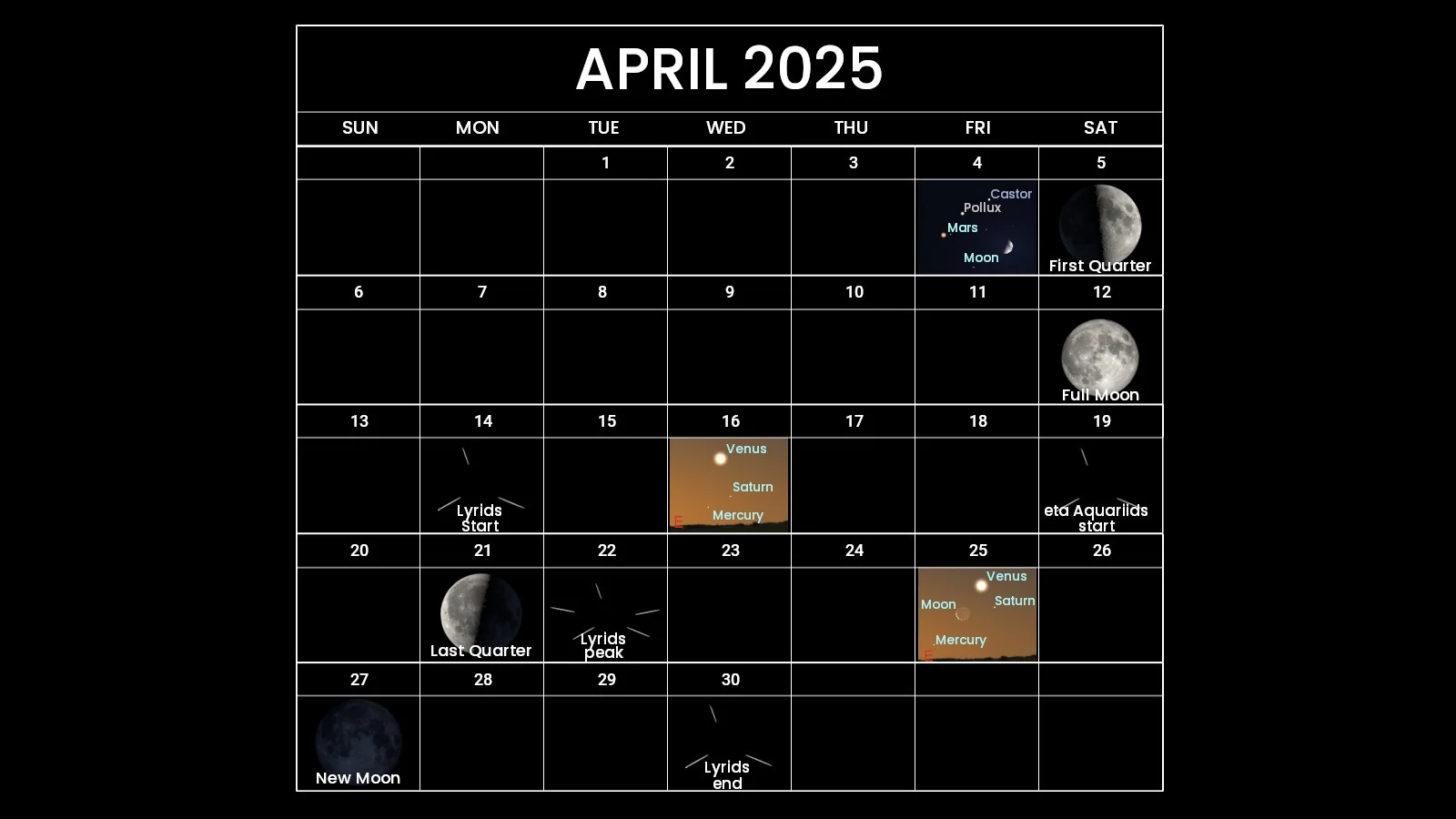
The astronomical events for April 2025, including the phases of the Moon, planetary conjunctions, and meteor showers. (Scott Sutherland, moon graphics from NASA's Scientific Visualization Studio, planet conjunctions courtesy Stellarium)
The Waxing Crescent Moon will be in the western sky each night to start off the month, until the First Quarter Moon on the 5th. The second week of the month will feature a Waxing Gibbous Moon until the night of the 12th-13th, when the Full Pink Moon will rise — the farthest, smallest, and dimmest Full Moon of 2025.
Passing through its Waning Gibbous phase from the 13th to the 20th, we will see the Last Quarter Moon on the 21st. The Waning Crescent Moon can be seen in the predawn sky each morning after until the New Moon on the 27th. Although we will not see it, this will be the closest 'super' New Moon of this year.
DON'T MISS: What's in the sky this Spring?
The Constellations
Spring Constellations are taking over across the night sky during the month of April.
To the south, Orion is still visible in the western sky each evening, with Gemini, Cancer, Leo, Virgo, and Serpens/Ophiuchus following along throughout the night.
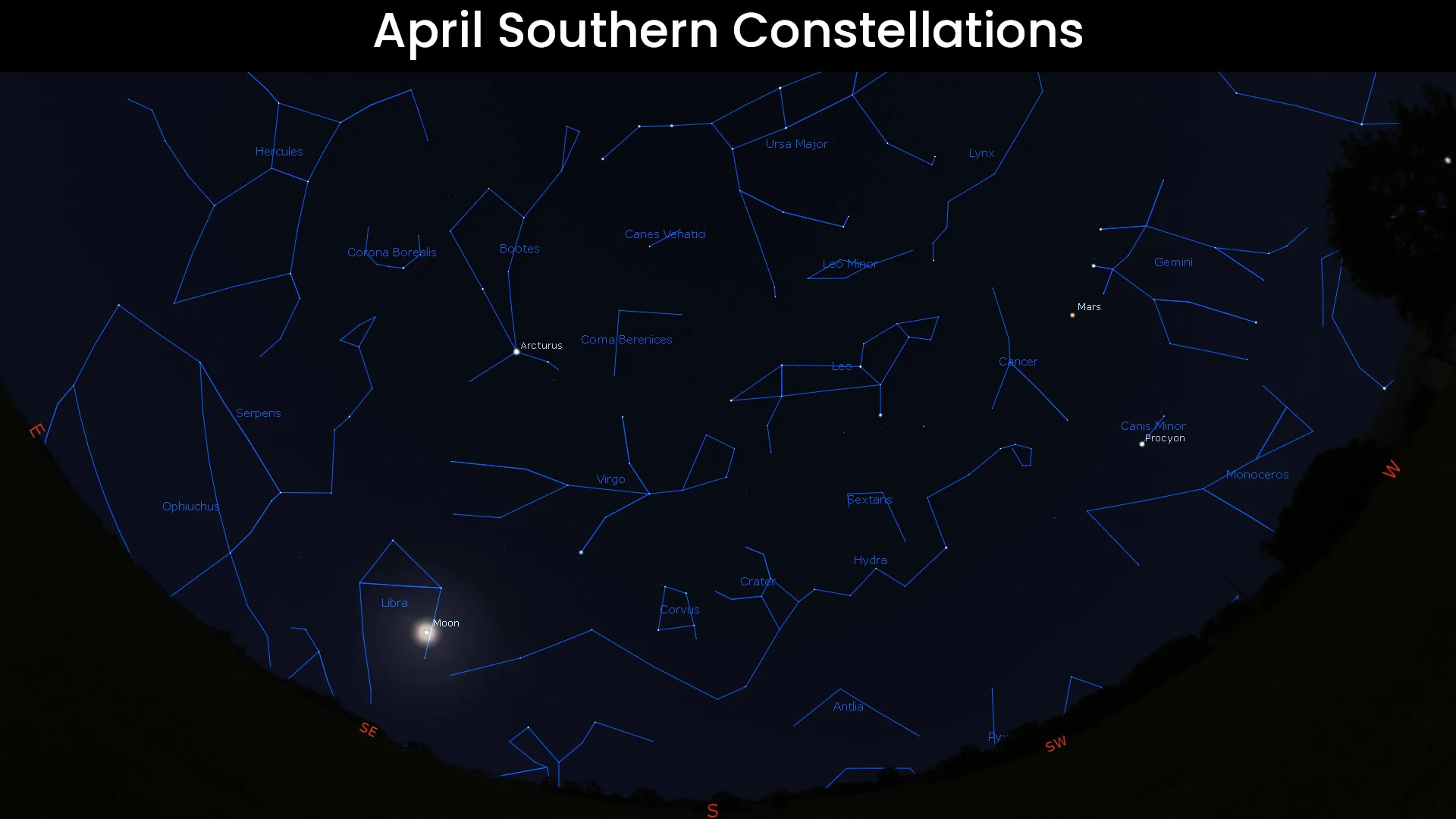
The constellations in the southern sky at midnight on April 15, 2025. (Stellarium)
To the north, Cassiopeia, Ursa Major ("The Big Dipper"), and Ursa Minor ("The Little Dipper") are still the easiest constellations to pick out, with Hercules and Draco featuring prominently as well.
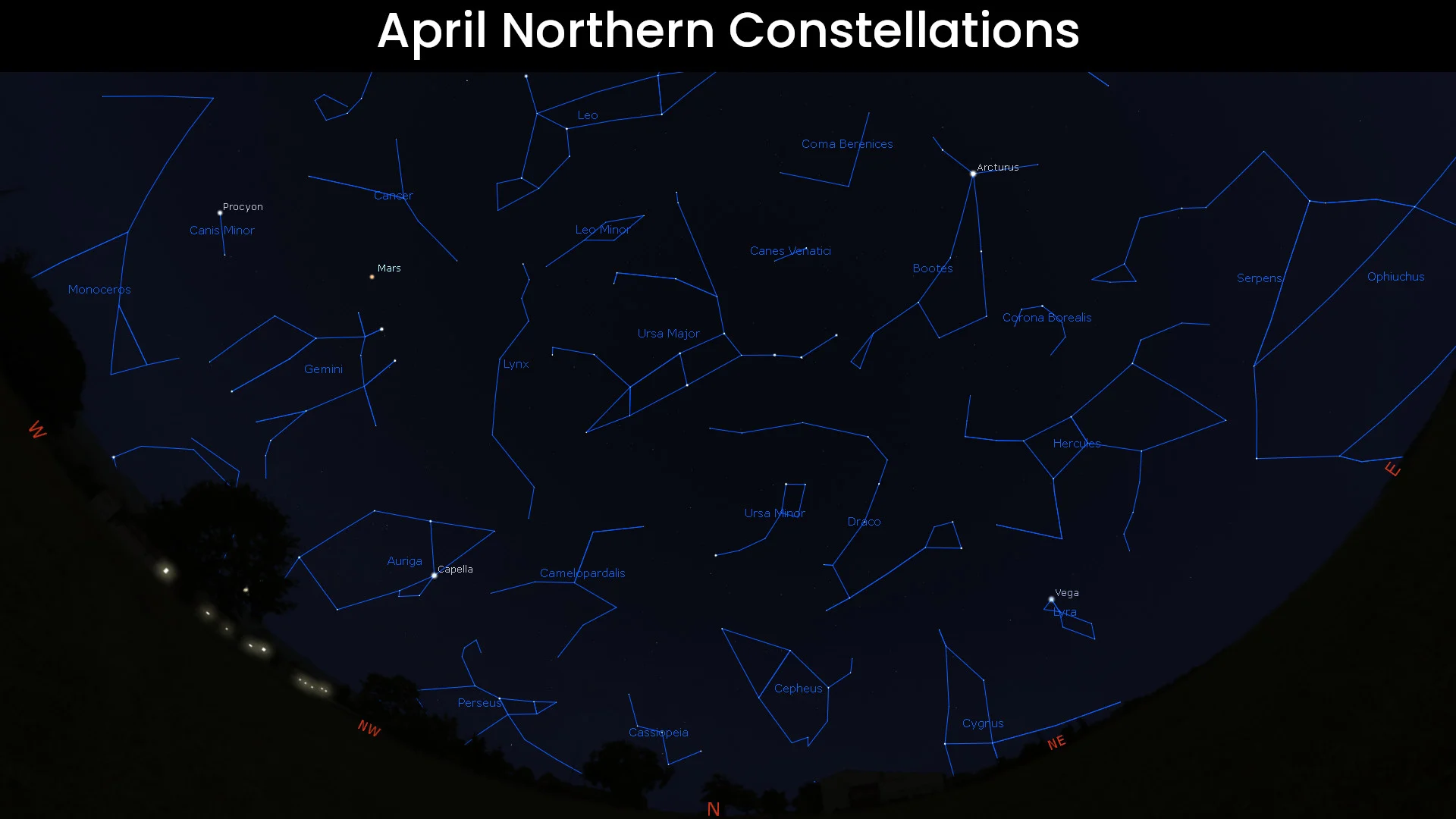
The constellations in the northern sky at midnight on April 15, 2025. (Stellarium)
SPACE WEATHER: Geomagnetic storms — When should we look up and when should we worry?
Meteor Showers
After over three months of waiting, the yearly 'meteor shower drought' between January and April ends this month.
The Lyrids
On the night of the 14th, Earth enters a stream of debris in space left behind by comet C/1861 G1 (Thatcher). The tiny meteoroids in this stream will produce meteors in our night sky, which appear to originate from the constellation Lyra. This is the annual Lyrid meteor shower.
The Lyrids start out sparse, with maybe one or two meteors per hour, for the first few days of the shower. This number will increase as we approach the most concentrated part of the stream, until the shower peaks at around 20 meteors per hour on the night of the 21st through the 22nd. After the peak, the number of meteors diminishes until Earth exits Comet Thatcher's debris stream on the 30th.
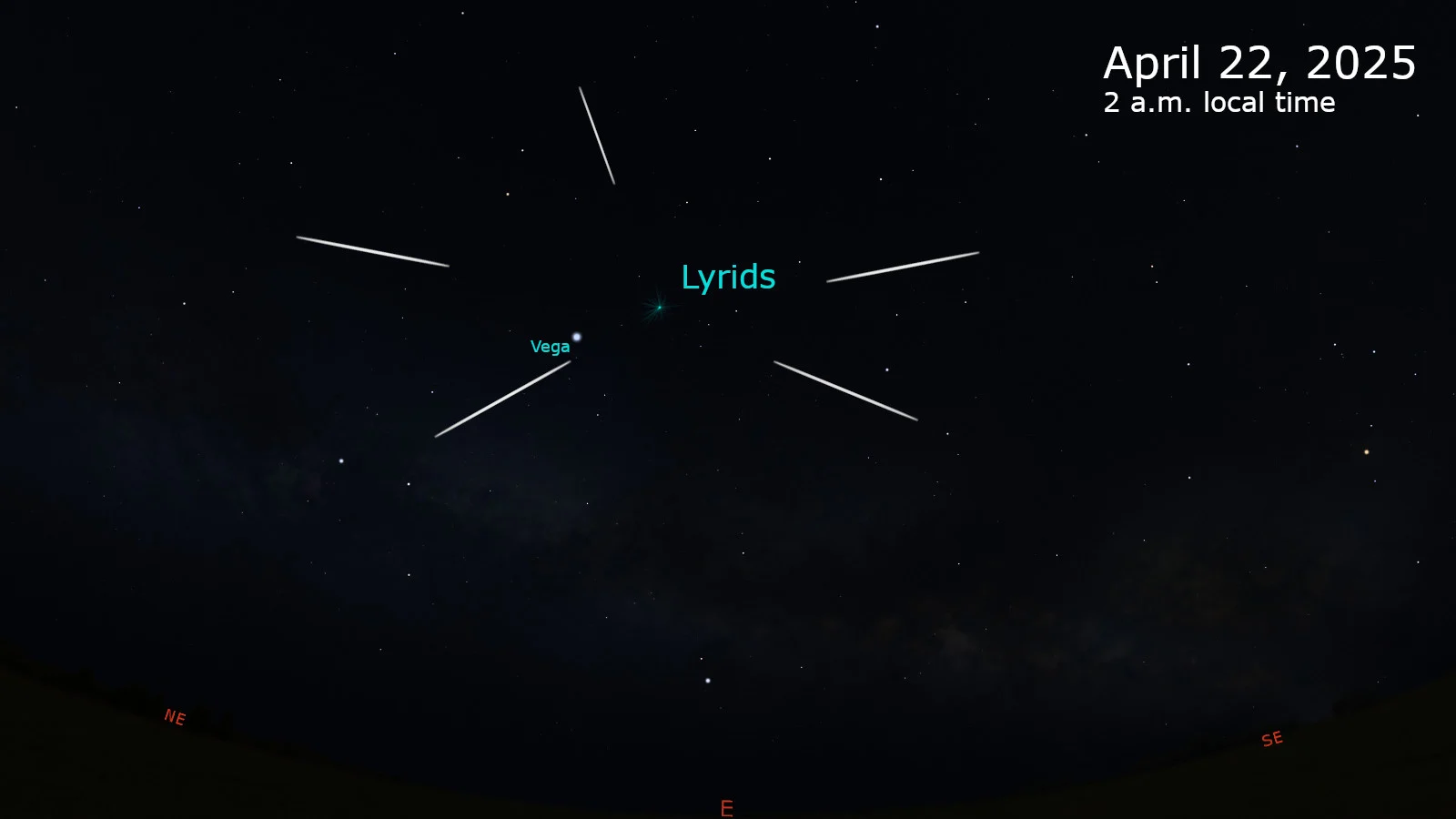
The radiant of the Lyrid meteor shower in the eastern sky on the night of April 21-22. (Stellarium/Scott Sutherland)
The timing of the Lyrids peak, with respect to the phases of the Moon, is fairly good this year. On the night of the peak, the meteor shower radiant rises at around 9:30 p.m., and a Waning Crescent Moon will appear above the horizon around 4 in the morning. That leaves most of the night with a dark, moonless sky, and even the light of the Crescent Moon shouldn't spoil the show.
This is good news, because the Lyrids typically produce about 20 meteors per hour during their peak, so we can use all the help we can get to spot as many of them as possible.
One exceptional thing about this meteor shower is that the meteoroid debris from Comet Thatcher hits the top of Earth's atmosphere at exceptionally fast speeds, around 100,000 km/h. Thus, anything larger than a grain of dust in the stream tends to produce a bright fireball that can easily be spotted, even during a Full Moon!
The eta Aquariids
On April 19, a second meteor shower begins, as Earth crosses into a second debris stream in space, this time left behind by famous Halley's Comet! This begins the eta Aquariid meteor shower.
As with the Lyrids, the eta Aquariids begin with just a few meteors per hour, visible in the few hours just before morning twilight. We won't see this meteor shower peak until early May, though.
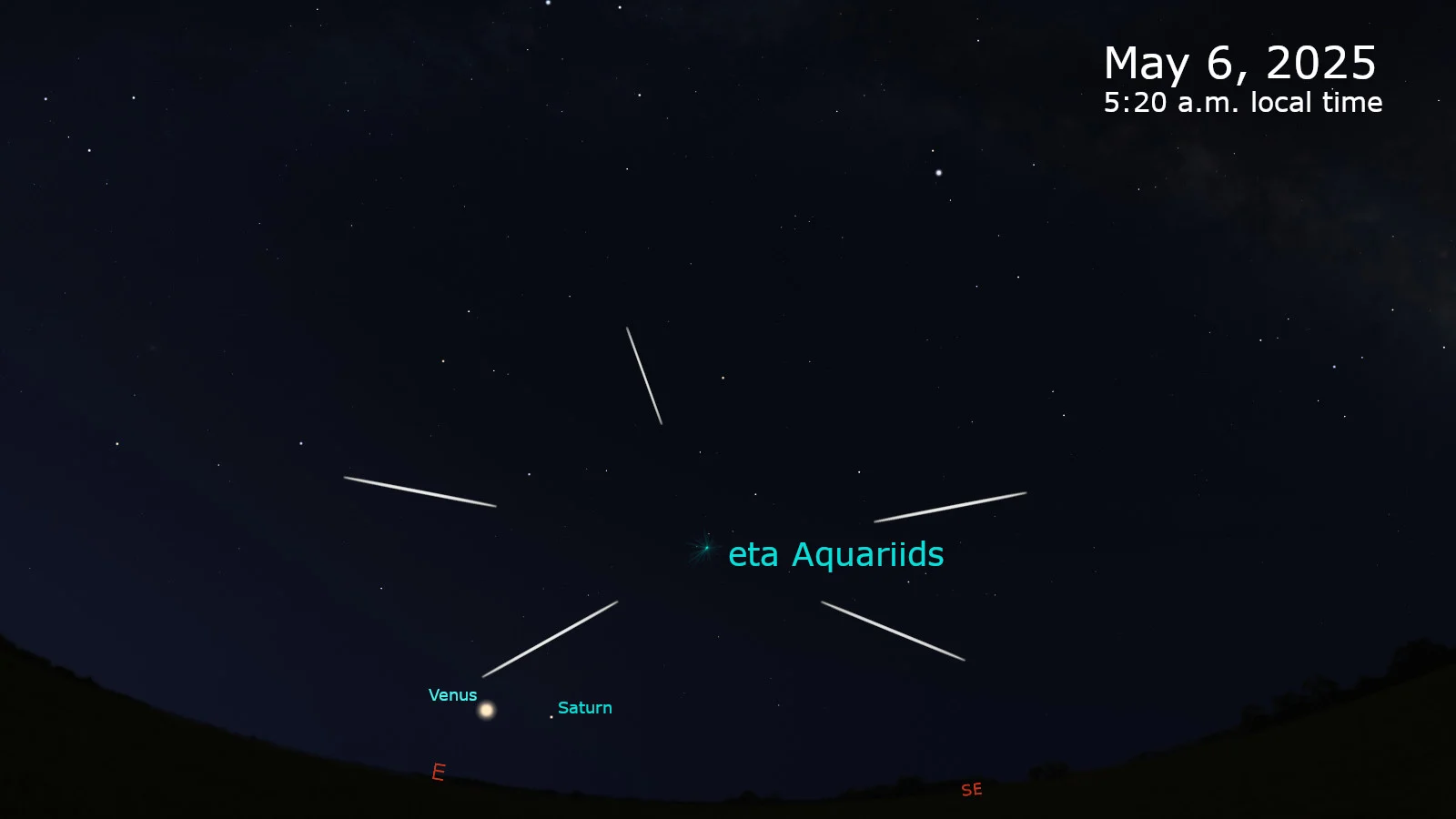
The radiant of the eta Aquariid meteor shower in the predawn hours of May 6, 2025. (Stellarium/Scott Sutherland)
One fascinating phenomenon we tend to see with the eta Aquariids is something called 'persistent trains'.
These are glowing trails left behind after the meteor winks out, which can persist in the air for anywhere from minutes to hours.
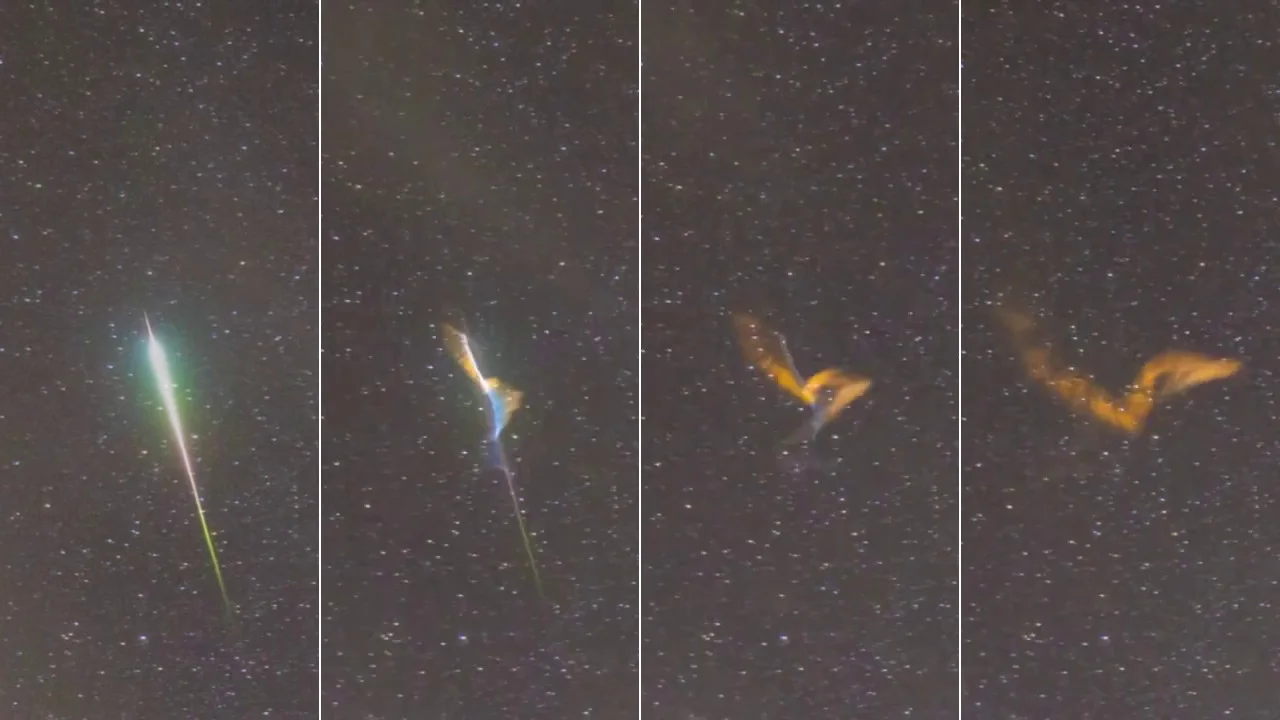
Four frames taken from a persistent train video, shot on October 21, 2022, show the initial Orionid meteor flash, and three views of the persistent train that developed in its wake. (Brenda Tate/Tim Doucette/UGC)
Exactly what causes these persistent trains is still something of a mystery. The problem, mostly, is that they have only rarely been recorded, so researchers only have a few examples to study.
(Thumbnail image courtesy Fiona Donnelly who captured this Lyrid meteor along with the Northern Lights in April of 2017.)
